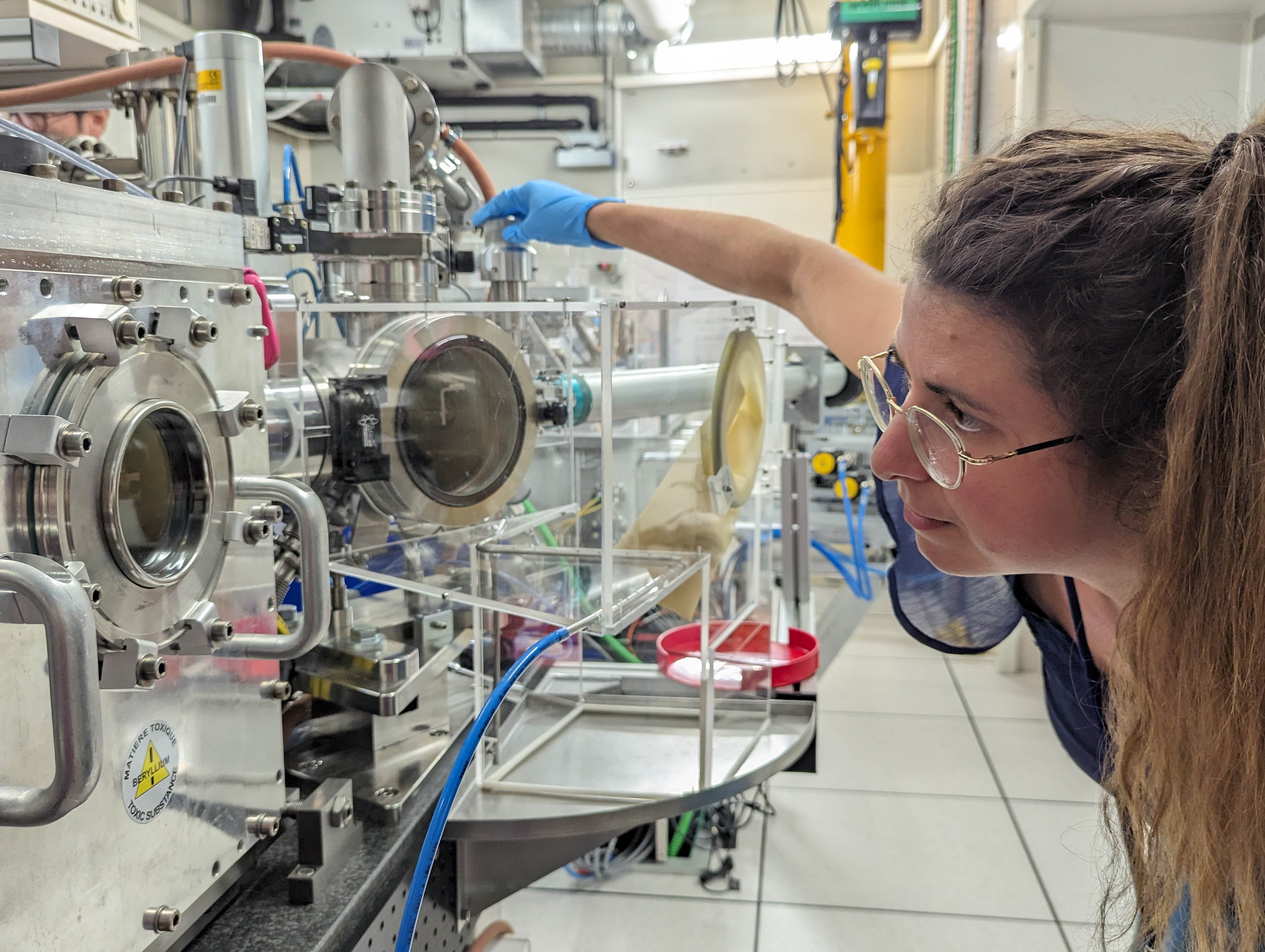- Home
- News
- General News
- #EBSstory ERC grantee...
#EBSstory ERC grantee uses ESRF to find effective nanofertilizers on leaves
11-10-2023
Fertilizers and pesticides today, whilst effective, are not fully efficient. This results in produce waste and can trigger pollutions as a side effect. Astrid Avellan, ERC grantee from the CNRS at the Geosciences and Environment institute of Toulouse, is using the ESRF to find nanofertilizer alternatives on leaves.
The increase in population and the expected stresses on soil due to climate change are putting the agro-ecosystems under pressure. This is leading to a high dependence of inorganic agrochemicals (IA), which include pesticides to control pests that can jeopardise the growth of a plant like Cu, and fertilizers that provide essential nutrients to plants, primarily nitrogen, phosphorus, and potassium. IAs today come with several drawbacks. They contribute to environmental pollution as they leach into soil and water, posing threats to soil ecosystems and life. Over-reliance on inorganic fertilizers can degrade soil quality and fertility. Ultimately, the heavy use of inorganic agrochemicals can undermine the long-term sustainability of agricultural systems.
Now Astrid Avellan, an ERC grantee researcher in the University of Toulouse, is looking into solutions to this problem through her ERC starting grant, LEAPHY: Unravelling the behaviour of inorganic (nano)phases in leaves to optimize the foliar delivery of sustainable agrochemicals.
“Until today, research in IAs has always focused on trial and error. My hypothesis is that applying nanobased formulations on leaves to fertilize plants could ultimately decrease the amount of IAs we use today”, explains Avellan.
 |
|
Astrid Avellan, on beamline ID21. Credits: M. Duding/ESRF. |
Nano-IAs can exhibit reduced leaf leaching and increased bioavailability, which would lead to an optimized dosage of IA. However, knowledge on the IA behaviour on leaves is scarce. “This project aims to establish the physical-chemical, anatomical and physiological parameters that would allow nanoparticles to enter a leaf: how they enter, how they cross the barriers they find in the plant, what transformation do they go through on the way, etc”, says Avellan.
ID21 to track nanofertilizers
This is where the ESRF comes in the picture. On ID21, Avellan and her colleagues from Carnegie Mellon University (USA) and Universidade de Aveiro (Portugal), with her ESRF collaborators, can assess the fate of the nano fertilizers at a cellular level, using X-ray fluorescence. They can also track IA transformations using micro X-ray absorption near edge structure.
The team uses model nano-IAs with controlled shape and surface properties to expose them to plant leaves and plant cells. Using the synchrotron X-rays, researchers quantify pathways and associated rates of uptake, transformations and behaviour in frozen tissues.
“The ESRF plays a crucial role in the project by enabling experiments on the ID21 beamline, where we can successfully study the elemental speciation of our samples at a cryogenic state”, says Avellan, who has already done five experimental sessions at the ESRF since the beginning of her ERC grant, in 2022.
Hiram Castillo, ID21 scientist and plant researcher, adds: “On ID21 we have extensive experience in research on the effect of nanoparticles in plants and roots and this has helped us in the design of these experiments”.
The result of Avellan’s research aims at the establishment of a predictive modeling framework for the biological and chemical interactions that govern IA adhesion, uptake, and translocation from leaves to other plant tissues and organs.
“We will use this new knowledge to design and test bio- and geo-inspired copper-based AIs that contribute to successful strategies to counteract the limitations of current fertilizers and pesticides”, concludes Avellan.
Text by Montserrat Capellas Espuny. Photo by Marine Duding/ESRF.
Top image: Copper-based nanomaterials remain at the surface of the leaf. Credits: A. Avellan.



